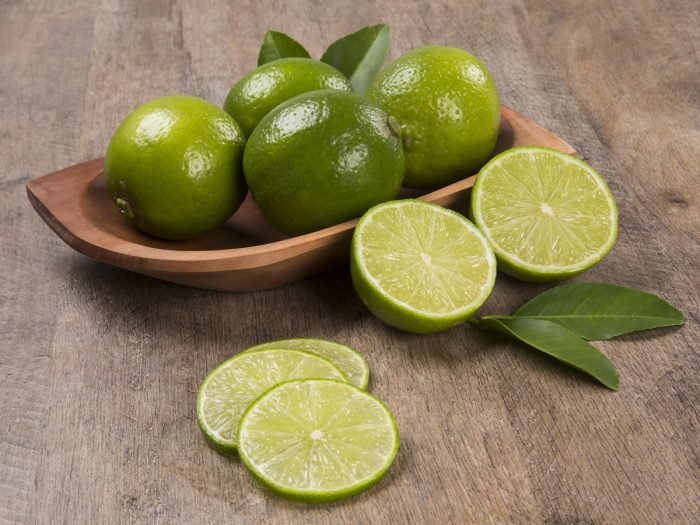Limes and lime juice are rich in vitamins, minerals, antioxidants and other nutrients
Lime wedges look fabulous perched on the rims of your favorite beverage, but they’re so much more than a simple garnish. Limes are also packed with health-enhancing phytonutrients.
Cleveland Clinic is a non-profit academic medical center. Advertising on our site helps support our mission. We do not endorse non-Cleveland Clinic products or services. Policy
Registered dietitian Julia Zumpano, RD, LD, shares six stellar reasons to include limes and lime juice in your diet.
Why are limes good for you?
The vitamins, minerals, antioxidants and other nutrients in limes offer anti-inflammatory and immune-boosting benefits. They can also help fight cellular damage, boost skin health, manage blood sugar and prevent kidney stones.
Limes are high in fiber and low in calories and sugar, too. According to the U.S. Department of Agriculture (USDA), a lime measuring 2 inches in diameter contains approximately:
20 calories
7 grams of carbohydrates
0.1 grams of fat
1.9 grams of fiber
0.5 grams of protein
1.3 milligrams of sodium
1.1 grams of sugar
A single lime also provides 19.5 milligrams of vitamin C. That’s about 22% of your daily value (DV).
According to Zumpano, the nutrients in limes may help:
1. Reduce inflammation
Inflammation is your body’s natural response to illnesses and injuries. It helps us heal. The trouble starts when the inflammation becomes chronic. Long-term inflammation can contribute to:
Digestive problems
Poor immune function
Chronic pain
Cardiovascular and metabolic diseases
Mental health issues
Skin issues and accelerated aging
“A diet that’s rich in vitamin C helps lower inflammation,” says Zumpano. “Vitamin C neutralizes free radicals, unstable molecules that can cause cellular damage.”
Limes also contain anti-inflammatory molecules that can help prevent chronic inflammation.
2. Support immune health
The vitamin C in limes supports your immune system, which can be especially helpful during cold and flu season.
“If you catch a cold or develop an upper respiratory infection, vitamin C may shorten the duration of the illness,” says Zumpano. “That’s because vitamin C stimulates the production of infection-fighting white blood cells.”
3. Prevent kidney stones
Limes and other citrus fruits contain citrate and vitamin C, which may break up or prevent kidney stones. Kidney stones develop when urine contains too much calcium, oxalates or other minerals. These substances form crystals that then exit your body in your pee.
While this can happen painlessly, passing some stones can be excruciating. And if you go through it once, you’re more likely to deal with them in the future.
“If you’ve ever had to pass a stone, it’s an experience you will not forget,” empathizes Zumpano. “Unfortunately, some people become very prone to kidney stones.”
Your food choices can help lower your risk of kidney stones, which is where limes come in. They’re effective enough that urologists sometimes refer to citrus-based kidney stone treatments as “lemonade therapy.”
“If a low-sugar limeade’s more your style, I’m all for it!” Zumpano quips.
4. Protect against cellular damage
Limes — like other citrus fruits — contain powerful antioxidants that help reduce oxidative stress. Oxidative stress can cause DNA changes that contribute to a wide range of conditions like dementia, heart disease and cancer.
Limes can’t protect against those changes by themselves, but they’re a great option if you’re trying to boost your antioxidant intake, as they contain:
Hesperidin (found in the rind and peel)
Limonoids
Vitamin C
Quercetin
5. Help manage blood sugar
Limes are low on the glycemic index, meaning you can eat them without worrying about your blood sugar jumping. In fact, the American Diabetes Association is such a fan of these tangy treats that they include them on their list of “superstar foods” for people living with diabetes.
“Keep in mind that limes can’t offset foods that are high on the glycemic index,” Zumpano clarifies. “A lime margarita is still a margarita.”
6. Boost skin health
The vitamin C in limes helps you form collagen, a protein found throughout your body. If you’re into cosmetics, this is probably old news. After all, vitamin C serums are a popular option for brightening dull skin and reducing dark spots.
“Much of your skin is made up of collagen, which gives your skin strength and elasticity,” Zumpano explains. “The vitamin C and other antioxidants in limes may help prevent signs of aging and speed wound healing.”
In other words, a diet that’s rich in citrus fruits like limes can help you maintain your youthful glow from the inside out.
Are limes better for you than lemons?
“Lemons and limes contain very similar nutrients,” says Zumpano. “From a health standpoint, one isn’t better than the other.”
But when it comes to using lemons and limes in your food, they’re not necessarily interchangeable. Lemons can be slightly sweeter and mellower, while limes tend to be more tart.
Final thoughts
Lime juice is a great way to flavor your water or add extra zip to your food. But if you want all the health benefits these little flavor bombs have to offer — including fiber — use as much of the whole fruit as possible, from pulp to peel.
Try using the juice and zest in a salad dressing, curd or marmalade. If you can handle the bitter taste of the white pith, throw half a lime into your juicer for a green juice that’s sure to wake you up in the morning. Are you a fan of Persian food? Try using dried limes (whole or powdered) to add flavor to soups, stews and teas.
Trust us, you’ll be glad you gave limes a turn in the culinary limelight!





